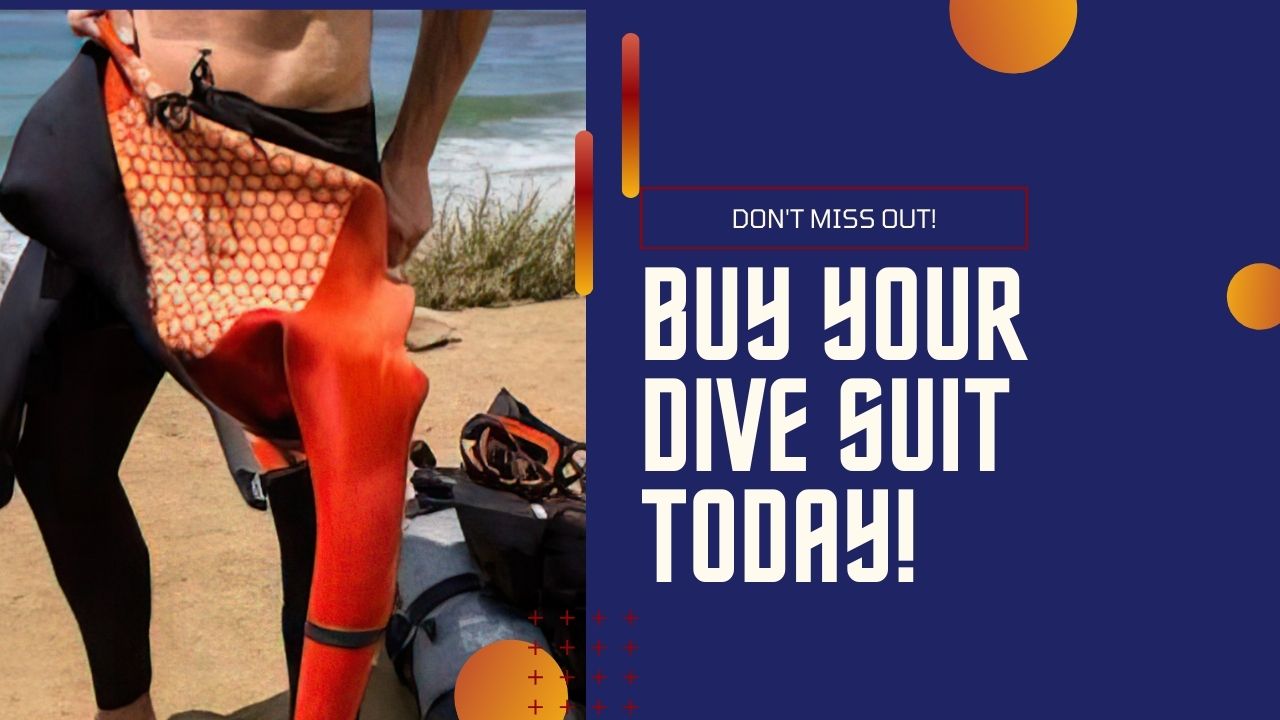You have 0 product(s) in your cart.
Abyss Scuba Diving
Explore In Comfort: Find The Best Dive Suit For Your Undersea Adventures
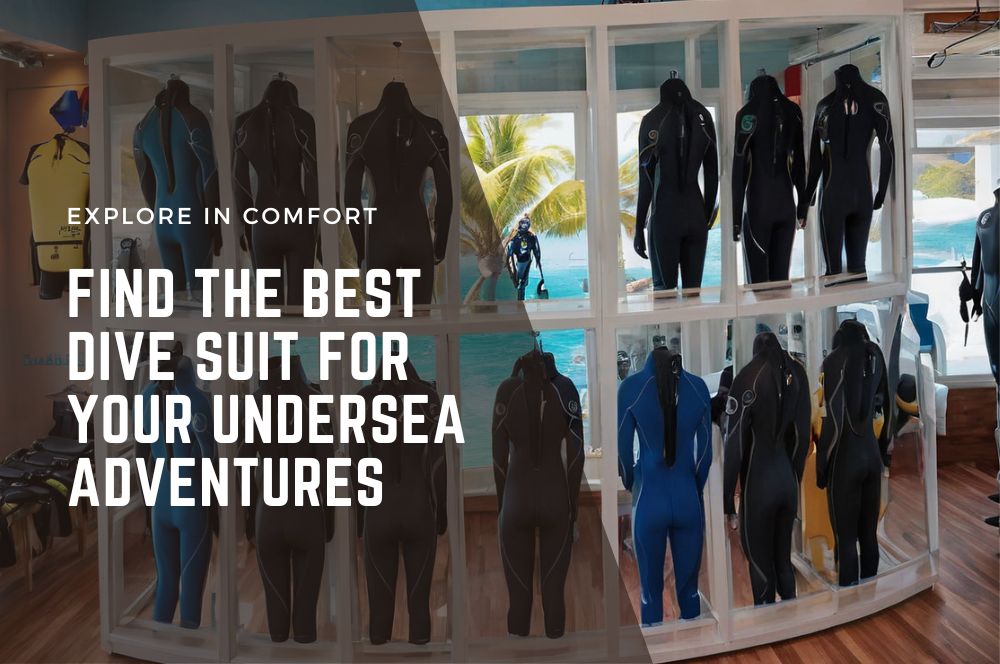
Explore in Comfort: Find the Best Dive Suit for Your Undersea Adventures
Finding the right dive suit can be the difference between an average and an exceptional dive. Whether you’re navigating warm seas or icy depths, we’ll guide you to the best dive suit for your needs. Discover the crucial factors that will influence your choice, from water temperature to suit technology, without drowning in details.
Key Takeaways
-
Selecting the right dive suit hinges on water temperature, diving environment, and personal fit and style preferences; with thicker suits for cold water and lightweight options for warmer climates.
-
Dive suits are made from materials like neoprene and its alternatives, like Yulex and Limestone neoprene, while advancements in technology enhance diver performance and safety, offering better insulation and specialized features like bioluminescence for night dives.
-
Proper care and maintenance of a dive suit involve thorough cleaning after each use, appropriate storage, and timely repairs, which prolong the suit’s lifespan and maintain its performance.
Choosing the Right Dive Suit for Your Needs
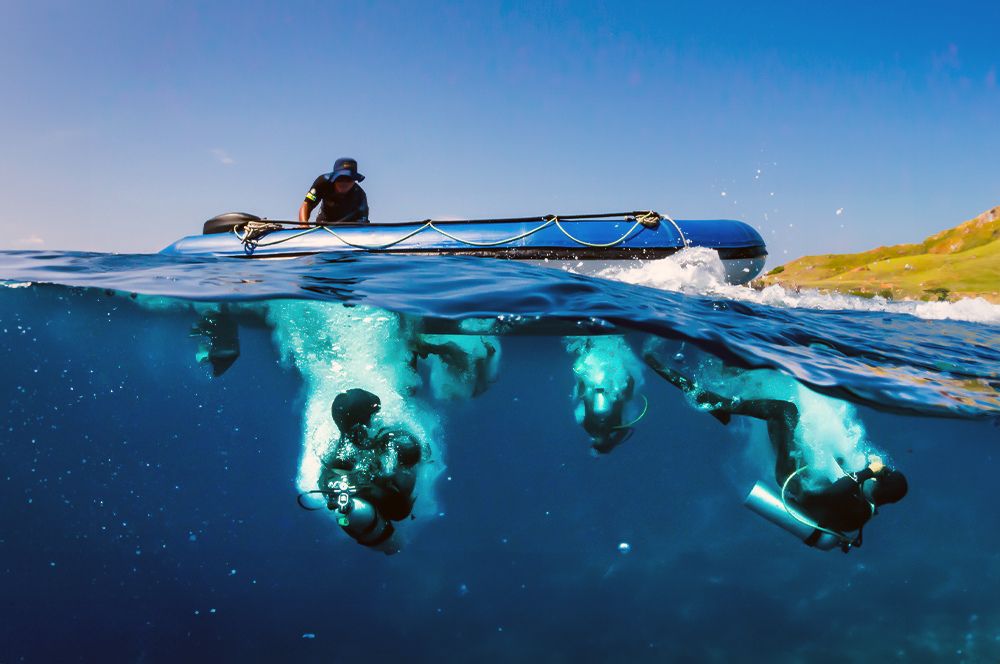
Choosing the right dive suit is an essential part of your diving preparations, as it significantly impacts your comfort, safety, and overall experience underwater. Dive suits come in various designs and materials, each tailored to specific water temperatures and diving environments. But beyond these technical considerations, your personal preferences and fit matter too. After all, you want a suit that not only keeps you warm and protected but also makes you feel comfortable and look great.
So how do you find such a suit? Let’s explore.
Water Temperature Considerations
Just as you wouldn’t wear a winter coat in the summer, your dive suit must be appropriate for the water temperature. In warmer waters, a thinner wetsuit or rash guard may suffice, offering protection without causing overheating. But as the temperature drops, a thicker suit becomes necessary.
A thicker suit, such as a 7mm wetsuit, provides better insulation, keeping you warm during your cold water diving adventures. However, bear in mind that failure to select the appropriate thickness could lead to decreased mobility and heightened fatigue. So always consider water temperature as a key factor in choosing your suit.
Diving Environment Factors
Your diving environment also plays a pivotal role in your dive suit selection. Factors such as the depth of your dive, exposure to underwater elements, and the duration of your dive all influence the type and thickness of your suit.
For instance, longer dives in colder waters demand a thicker suit for better insulation. Similarly, if you’re diving in an environment with rough surfaces or sharp objects, you may need a suit that offers additional protection. Therefore, it’s essential to consider your diving environment when selecting your suit.
Personal Preferences and Fit
Lastly, your suit should align with your personal preferences and provide a comfortable fit. A suit that doesn’t fit properly can restrict movement, cause discomfort, and compromise insulation. Remember, a good wetsuit should fit snugly without being too tight or too loose. Wetsuit design plays a crucial role in ensuring the perfect fit.
It’s also important to consider your style preferences. With a range of designs, colors, and styles available, you can find a suit that not only meets your functional needs but also reflects your personal taste.
Scuba Diving Wetsuits: Materials and Technologies
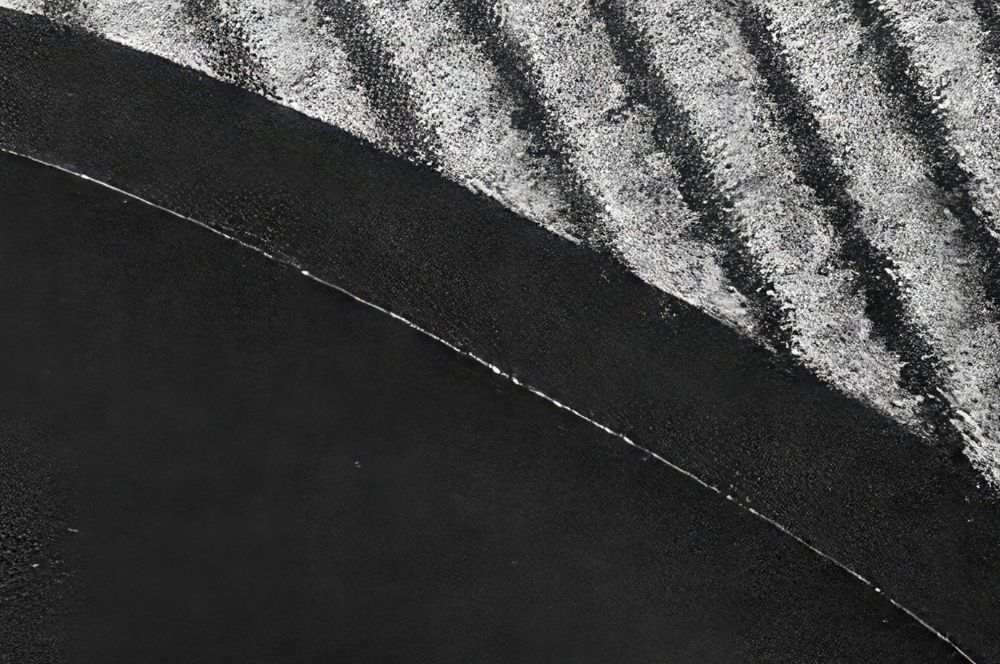
Now that we’ve explored how to choose the right dive suit, let’s delve deeper into the materials and technologies that make these suits work. The most common material used in scuba diving wetsuits is neoprene, favored for its flexibility, insulation properties, and waterproofness. But in recent years, alternatives to neoprene have emerged, offering eco-friendly and hypoallergenic options.
Additionally, the dive suit industry has seen a wave of innovative technologies aimed at enhancing performance, comfort, and durability. Let’s take a closer look.
Neoprene: The Classic Choice
Neoprene, a synthetic rubber, has long been the material of choice for dive suits. Its molecular composition allows it to retain its form while stretching and flexing, ensuring divers unrestricted mobility underwater. Plus, neoprene boasts exceptional thermal insulation, helping to maintain warmth for divers in chilly water conditions.
However, like all materials, neoprene has its drawbacks. For one, it can be quite heavy and takes a while to dry. Nevertheless, its benefits far outweigh its drawbacks, making it a classic choice for divers worldwide.
Alternatives to Neoprene
While neoprene remains a popular choice, alternatives such as Yulex, Limestone neoprene, and Geoprene offer exciting possibilities. These materials are not only hypoallergenic but also environmentally friendly, making them an excellent choice for eco-conscious divers. Moreover, they match or even surpass the durability and thermal insulation properties of traditional neoprene, making them viable options for divers seeking superior warmth and longevity.
Innovative Technologies in Dive Suits
Dive suit technology has come a long way over the years, with manufacturers integrating advanced features and designs to enhance diver performance and safety. These include:
-
High-tech dive computers
-
Advanced buoyancy control devices
-
Innovative fin and mask designs
-
Specialized warming systems
-
Suits utilizing bioluminescence for night dives
These advancements have not only made diving safer but also more enjoyable, opening up new possibilities for underwater exploration.
Dive Suit Styles for Men and Women
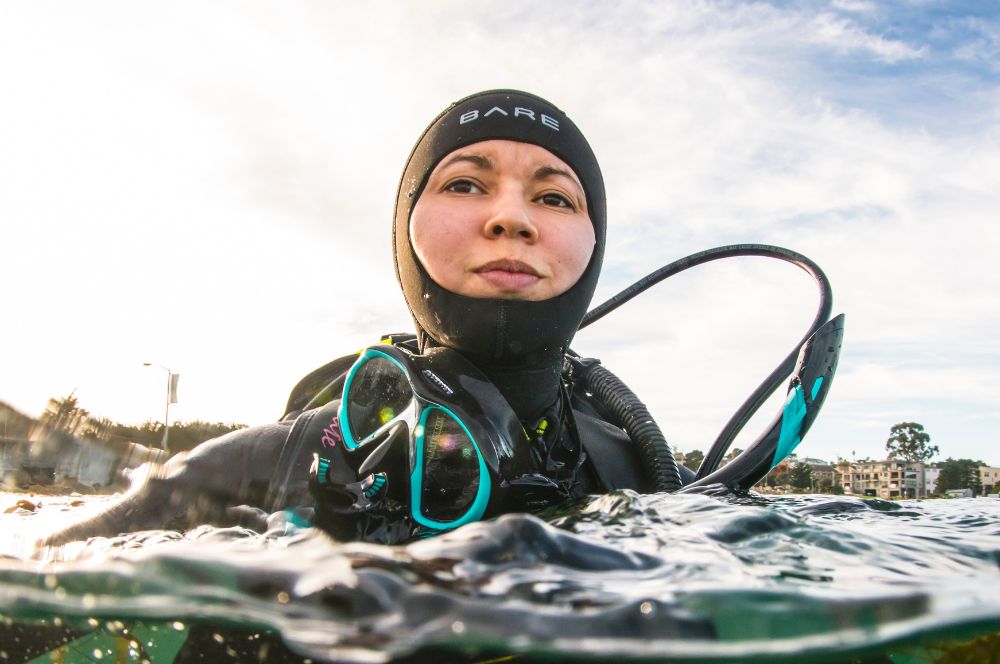
Having explored the materials and technologies used in dive suits, let’s now turn our attention to the different styles available for both men and women. Whether you prefer:
-
Full-length wetsuits for maximum coverage and insulation
-
Shorties and spring suits for warmer waters
-
Plus size and custom fit options for a personalized fit
There’s a dive suit style to suit every diver’s needs and preferences, especially during a dive wetsuit clearance sale, offering a variety of scuba wetsuits and scuba diving wetsuit options among other dive wetsuits.
Let’s dive into each of these styles in more detail.
Full-Length Wetsuits
Full-length wetsuits, as the name suggests, offer comprehensive coverage for the entire body. They are especially beneficial in colder waters, providing optimal insulation and heat retention. Brands like Bare, O’Neill, and Blue Seventy are renowned for their high-quality full-length wetsuits suitable for a variety of diving conditions.
So if you’re planning a dive in colder waters, finding the right wetsuit, such as a full-length one, is the way to go.
Shorties and Spring Suits
For warmer water dives, shorties and spring suits are an excellent choice. These suits offer:
-
Coverage of the torso, upper thighs, and arms
-
Suitable insulation and comfort without causing overheating, effectively managing body heat
-
Enhanced arm mobility and strategic stretch zones
-
Balancing warmth and agility
So if you’re planning a dive in warmer waters, consider a shorty or spring suit.
Plus Size and Custom Fit Options
Inclusive sizing and custom fit options ensure a comfortable and secure diving experience for everyone. For plus-size divers, brands like Girls that Scuba, Wetsuit Wearhouse, and PleasureSports offer a wide range of sizes, ensuring a comfortable and flexible fit.
Additionally, custom-fit dive suits provide several advantages, including improved warmth, enhanced comfort, and a better fit compared to pre-cut stock size suits. So whatever your size or body shape, there’s a dive suit out there that’s a perfect fit for you.
Top Dive Suit Brands on the Market
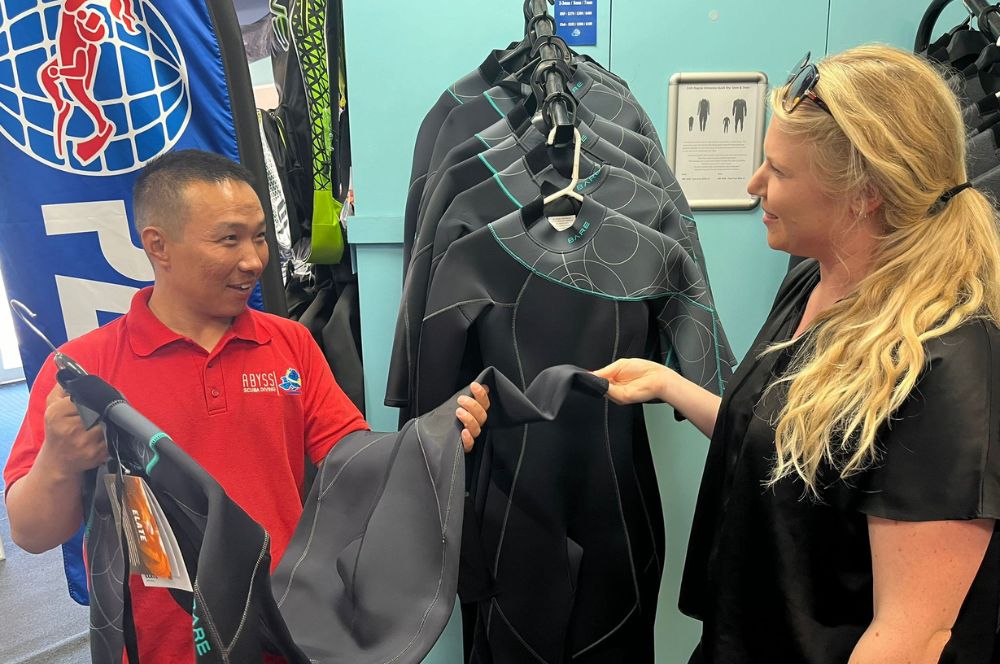
With so many dive suit brands on the market, it can be challenging to know which one to choose. But don’t worry, we’ve done the research for you. Here are some top dive suit brands to consider:
-
Bare: known for high-quality, durable dive suits
-
Cressi: a brand with a long-standing history in the diving industry
-
Mares: offers a wide range of suits to suit every diver’s needs and preferences
Let’s take a closer look at these top brands.
Bare
Bare is well-known for its high-quality, durable dive suits, with a particular emphasis on innovation. Their popular Bare Reactive 7mm wetsuit is perfect for cold water diving, while the X-Mission Evolution drysuit is a favorite among advanced tech divers. With Bare, you can be sure you’re getting a suit that’s not only designed to last but also packed with the latest features and technologies.
Cressi
Cressi, a pioneer in the scuba diving equipment industry, has a long-standing history of producing high-quality dive suits. With an extensive range of scuba equipment, including specifically engineered fins for diving and swimming in currents, Cressi ensures every dive is a comfortable and enjoyable experience.
With their commitment to excellence and a reputation that speaks for itself, Cressi is a brand you can trust.
Mares
Mares offers a wide variety of dive suit models, from wetsuits with varying thicknesses tailored for different diving scenarios to the inclusive Ultraskin line designed to cater to the needs of both male and female divers. With the incorporation of advanced technologies like liquid silicone and Trilastic technology, Mares ensures your dive suit not only fits perfectly but also enhances your performance underwater.
Ocean Pro and Enth Degree
Ocean Pro and Enth Degree are dedicated to providing top-notch dive suits for all types of divers. With a diverse selection of suits, from the Grommet 3mm Shortie to the Tour Snorkelling Set and Stinger suits, Ocean Pro ensures there’s a suit for every diver.
Meanwhile, Enth Degree offers performance thermal wear specifically designed for scuba diving and other high-performance water sports. With their advanced features and commitment to quality, both Ocean Pro and Enth Degree are brands worth considering.
Dive Suit Care and Maintenance
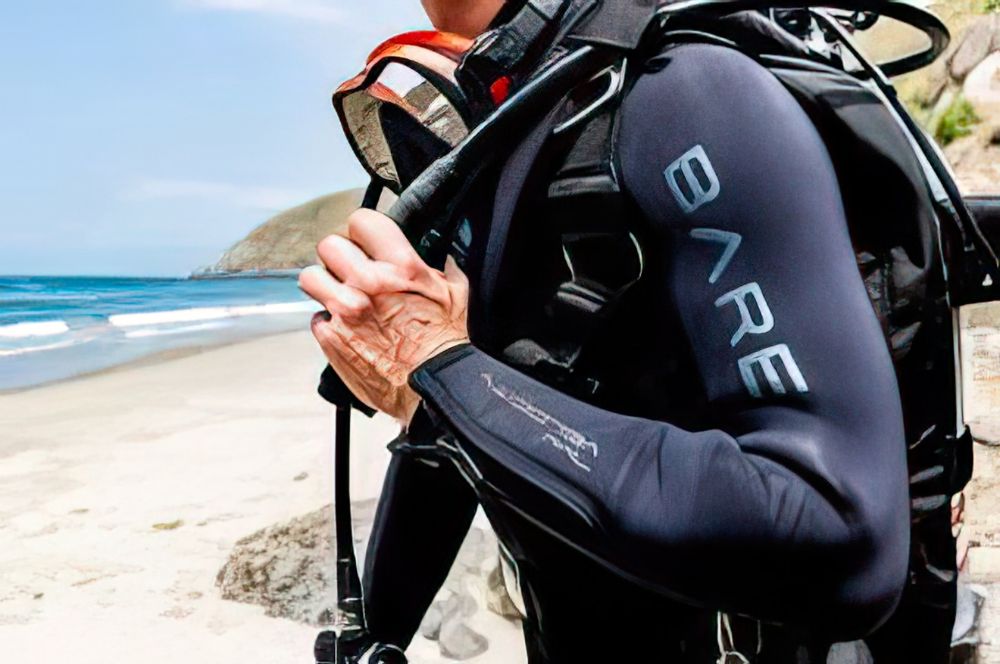
Taking care of your dive suit is just as important as choosing the right one. Proper care and maintenance not only ensure your suit lasts longer but also maintains its performance and comfort. From cleaning your suit to storing it correctly and repairing minor damages, there’s quite a bit you need to know to keep your suit in tip-top shape.
Let’s dive into these essential care and maintenance tips.
Cleaning Your Dive Suit
After a dive, it’s essential to clean your suit to remove salt, chlorine, and other contaminants. Saltwater can cause the suit material to become brittle, while chlorine can damage the material over time. By rinsing your suit with fresh water after each dive and occasionally using wetsuit shampoo, you can keep your suit clean and well-maintained, prolonging its lifespan and ensuring it’s always ready for your next dive.
Storing Your Dive Suit
Proper storage is another crucial aspect of dive suit maintenance. You should store your suit in a cool, dry, and sheltered location away from direct sunlight. Hanging the suit at the waist or filling it with loosely rolled towels can help it maintain its shape.
By following these tips, you can prevent damage and ensure your suit is ready for your next diving adventure.
Repairing Minor Damage
Despite your best efforts, your dive suit may suffer minor damages, such as small tears or punctures. But don’t worry, you can repair these damages yourself using neoprene cement or patches specifically designed for wetsuit repair.
By catching and repairing minor damages early, you can prevent them from becoming bigger problems and extend the life of your suit.
Summary
In this guide, you’ve learned how to choose the right dive suit based on water temperature, diving environment, and personal preferences. You’ve discovered the different materials used in dive suits and the latest technologies enhancing their performance, comfort, and durability. You’ve explored the various styles of dive suits and the top brands on the market. And lastly, you’ve learned essential care and maintenance tips to keep your suit in tip-top shape. With this knowledge, you’re now ready to choose the perfect dive suit and embark on your underwater adventures. So go ahead, dive in!
Frequently Asked Questions
What wetsuit is best for diving?
For diving in different temperature ranges, you can choose the best wetsuit based on the suggested thickness: 3mm for 21°C and above, 5mm for 20°C to 26°C, 7mm for 16°C to 20°C, and a semi-dry or drysuit for 15°C and below.
What thickness wetsuit do I need for diving?
You will need a 3mm wetsuit for warm water diving and a 5mm-7mm wetsuit for cold water diving. Consider the water temperature when choosing the thickness of your wetsuit.
Is a wetsuit or drysuit better?
It depends on the water temperature. Below 16 degrees Centigrade, a drysuit is better, while above that, a wetsuit is preferable. Personal preference also plays a role in making the decision.
What is a diving suit called?
The diving suit is commonly referred to as a wetsuit, made from closed-cell neoprene allowing water to seep in for thermal insulation (Wikipedia).
What is the difference between a wetsuit and a diving suit?
A wetsuit compresses with depth and loses buoyancy, while a drysuit offers thermal insulation and exclusion of water, allowing the diver to add air and compensate for increased pressure. This makes drysuits more suitable for colder or contaminated water, as they maintain insulating capacity even at depth.
Related Posts
-
Essential Dive Kit Essentials: Gear…
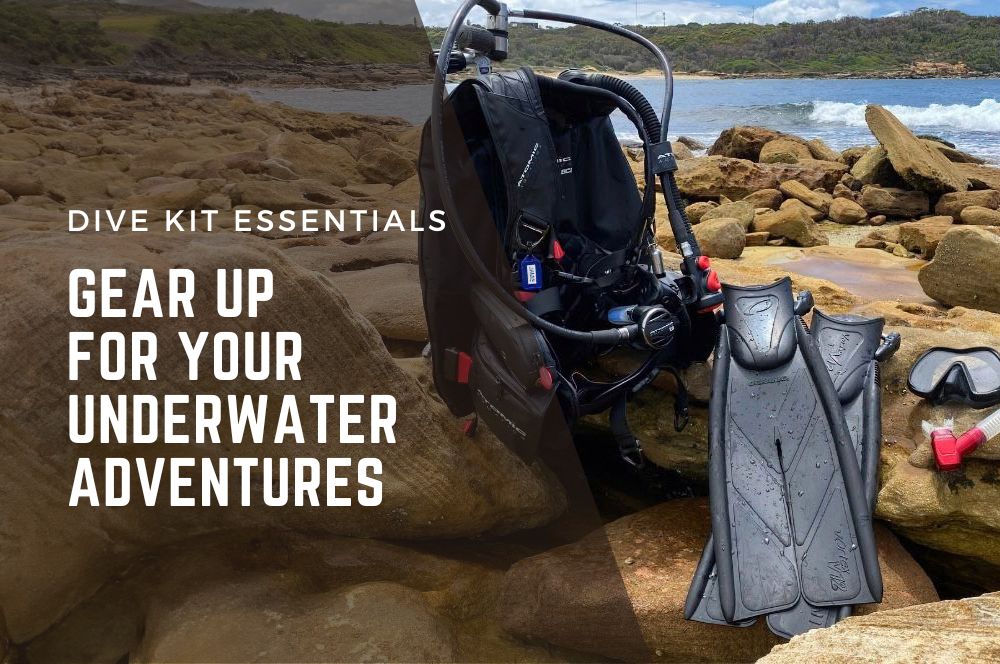
Essential Dive Kit…
Essential Dive Kit Essentials: Gear Up for Your Underwater Adventures A dive kit is your underwater lifeline. […] -
The Ultimate Guide to the Oceanic Dive…
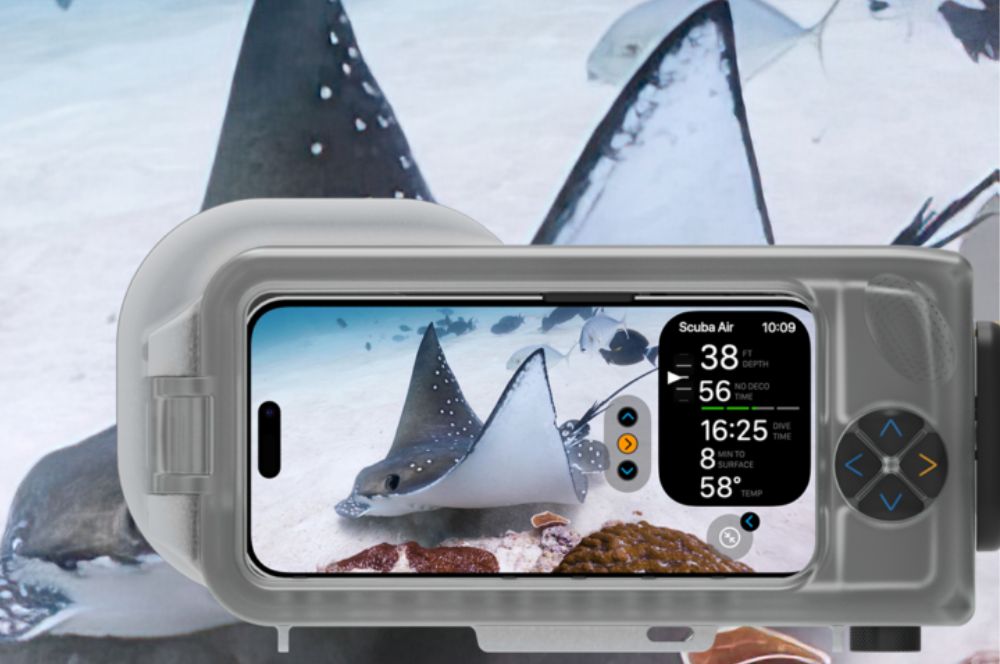
The Ultimate Guide…
Explore the Depths: Your Guide to the Oceanic Dive Housing for a iPhone Are you ready to embark on an incredible […] -
How Scuba Diving Transformed with the…

How Scuba Diving Transformed…
A Breath of Fresh Air: How Scuba Diving Transformed with the Creation of the BCD Welcome to a world where […] -
Unveiling the Suunto Dive Computer:…
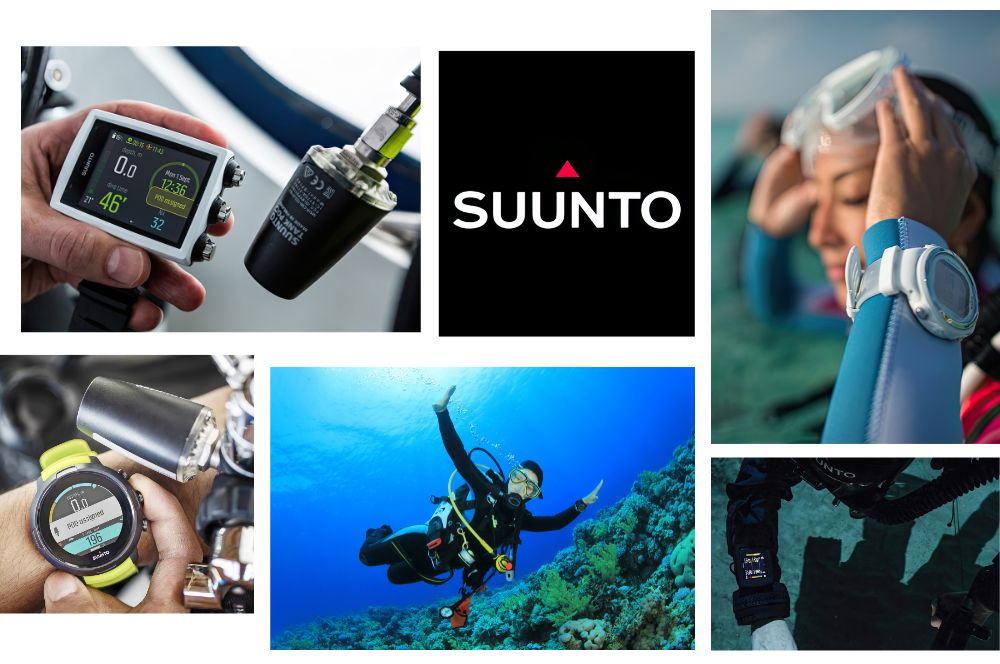
Unveiling the Suunto…
Exploring the Features of the Suunto Dive Computer Diving into the deep blue ocean is an exhilarating experience, […]
Recent Posts
